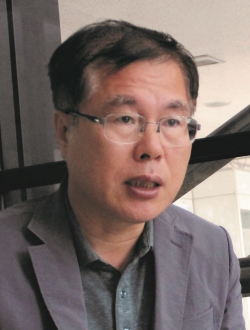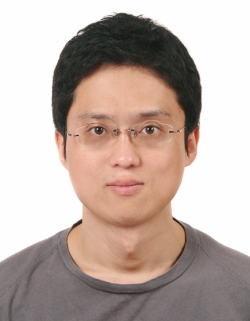The term Artificial Intelligence was first coined in 1956 by an American computer scientist named John McCarthy. Currently, the Oxford Dictionary defines Artificial Intelligence (AI) as “the theory and development of computer systems able to perform tasks normally requiring human intelligence.” As AI becomes more closely intertwined in our daily lives, its importance only grows bigger; but due to its complex nature, it has long been a subject only dealt with at graduate schools. Universities have recently began teaching AI to undergraduate student as well. Ewha Voice dove into what undergraduates can expect to learn about AI in school, and the controversies in constructing majors dedicated to artificial intelligence.
Learning AI as part of an undergraduate course
Since Soongsil University refurbished the first Artificial Intelligence Department in Korea as part of the Department of Computer Science in 1995, only graduate schools taught AI relevant courses in Korean universities. Nowadays, not only have some schools announced to construct AI departments for undergraduates, but the number of supplement tracks on AI are increasing. Also, numerous private academies are opening courses on artificial intelligence as well.
Ewha Voice interviewed Professor Yong Hwan-seung of Ewha Computer Science and Engineering, a department under the Division of Software Science and Engineering, to acquire understanding about what learning artificial intelligence as an undergraduate means.

Yong is currently the central manager of the Fourth Industrial Revolution transformation at Ewha. When asked how seeing courses in artificial intelligence in undergraduate school has become possible, Yong said it is because all technology trivializes over time. Yong articulated with an example.
Research on computers has only been available in graduate schools, but now, it has become a common instrument to study in undergraduate education. Thus, Yong believes it is a right flow for universities to teach partially of artificial intelligence to undergraduate students as in showing what they will face in the future.
However, Yong stated that it may be inefficient to create a separate AI major, as most basic courses would overlap with those of Computer Science.
“Artificial intelligence has its basis in computer science,” Yong began. “Consequently at Ewha, professors are putting efforts to provide opportunities for engineering department students to learn about artificial intelligence via major courses. Even if a separate department for artificial intelligence emerges, it won’t be easy to differentiate it from Computer Science and Engineering.”
For example, for this spring semester, Division of Mechanical and Biomedical Engineering launched a course named Pattern Recognition and Machine Learning, and the Cyber Security department also successfully provided two additional courses, Machine Learning, and Artificial Intelligence.
How profoundly will students get to learn about AI in undergraduate courses?
Professor Min Dong-bo of Computer Science and Engineering explained that artificial intelligence is a broad subject covering both machine learning and deep learning. Min stated that there are two aspects in learning AI: conducting a research to optimize the AI models or applying it properly to certain fields. However, researching deep learning depends on the expertise of other domains, which cannot fit within an undergraduate curriculum.

“For example, if a student is majoring in artificial intelligence and wishes to make hardware-specific AI, she would need as much knowledge on hardware as someone who majored in Electronic and Electrical Engineering,” Min said.
Min explained in an undergraduate curriculum that students can expect to learn the structures of original artificial intelligence models that become the foundation of contemporary innovations.
He reflected this philosophy in his class, Open Software Project. For seven weeks he gave students consecutive tasks of filling out the blanks of a convolutional neural network made with C++ programming language.
Students had to practice the full mechanism of the model in order to complete the given task. For the last half of the semester, students had the chance to learn the inner structure of PyTorch, an open source library by Facebook that simplifies the development of artificial intelligence service.
However, AI education in universities not only concerns raising engineering major students to become familiar with AI models, but also provoking questions about its ethics to non-engineering students and teaching them about the new technology so that they have the chance to come up with ideas to combine their major knowledge with AI. Stanford University, for instance, launched AI, Humanities & the Arts Workshop last winter to achieve such goal.
When asked about bringing together different academia with AI at undergraduate level, Min and Yong agreed that it would be difficult to achieve the object through university courses. Rather, Min thinks opening hackathons or contests for students to autonomously team up with each other is more practical and likely.
For the idea to be realized, Min said that schools must first construct a supportive educational system for nonengineering students to be informed of AI innovations. To achieve this, however, two questions need to be answered.
“The decision on how many majors we should teach artificial intelligence needs to be solved,” Min said. “The mathematical ability of students in the field of arts and humanities differ from those of engineering majors, so it will be challenging to teach them in the same class.”
Min also pointed out whether it is necessary to teach non-engineering students in undergraduate school at all considering each major has limited time to learn about their own field.
“Furthermore, converged studies of artificial intelligence and other academic realms already exist abroad but are limited to graduate schools.”
He articulated that bringing down the graduate-school level education for undergraduates is still very controversial.
Yong elaborated that hiring enough educators and creating appropriate textbooks are also hurdles to overcome.
“There are not enough educators concerning artificial intelligence. Even after a college manages to recruit teaching staff, it is difficult to employ them long enough to maintain a department since many other schools are competing for personnel,” Yong added.
Aritifical Intelligence facilitates development of arts and humanities
Yong said he especially feels the need for textbooks that converge arts and humanities with AI. He mentioned that AI has the potential to result in drastic changes in how we deem ourselves and studies that branch out from what constitutes a human being.
Most recently, the development of AI has questioned what differentiates human intelligence from artificial intelligence. According to Yong, expressing empathy and emotion can no longer be a distinguishing trait between AI and humans.
“Nowadays, artificial intelligence can pretend to empathize better than humans and learn to seem more courteous,” Yong stated. “Such humanistic qualities of artificial intelligence strongly stimulate the inquiry on what humanity is and also supports the results in technical terms.”
Deeper into the prospect of AI
“A period when artificial intelligence is not researched at schools and not wanted in industries is called an AI winter,” Min said.
The most recent winter was in the 1990s. Back then, only schools carried out AI research because it was too underdeveloped to be utilized in industries. As a result, the dilapidation of national interest in artificial intelligence led to bankruptcy in research funds.
Min thinks such a winter is unlikely in the future. The main difference between now and 30 years ago is that current artificial intelligence is closely related to industries. Massive technological companies like Google, Facebook, and IBM own the best research facilities and are producing groundbreaking results.
However, Min said artificial intelligence still has many tasks to overcome. Even narrow AI, which is praised for its high accuracy, is not always successful. On the other hand, general AI is yet to be developed. He commented that the demand for artificial intelligence professionals for both research and application is unlikely to diminish for the meantime.
Alternatives to constructing artificial intelligence major
Artificial intelligence is indeed a subject with much prospect and potential, but it has yet to be introduced in many universities as separate majors. College of IT Department of Software of Gachon University is the only university in Korea to establish a major dedicated to learning artificial intelligence for undergraduates.
Though Ewha does not plan to develop a department dedicated solely to AI, further education on the topic was introduced this year. A new TELOS track emerged to certify students who have taken artificial intelligence courses.

Numerous AI courses for engineering students and courses which introduced the most used technology to humanities students were very popular as well. On June 29, the school also hosted the first ‘The Direction of Future Education in an Era of AI’ forum online. More than 150 university professors and teachers attended the forum to discuss the direction of learning and teaching artificial intelligence.
The most recent forum was held for the third time on Aug. 31 and now is planned to be hosted on a monthly basis. Universities are continuing to upgrade AI education and offer students with the knowledge to enrich them for the Fourth Industrial Revolution.

